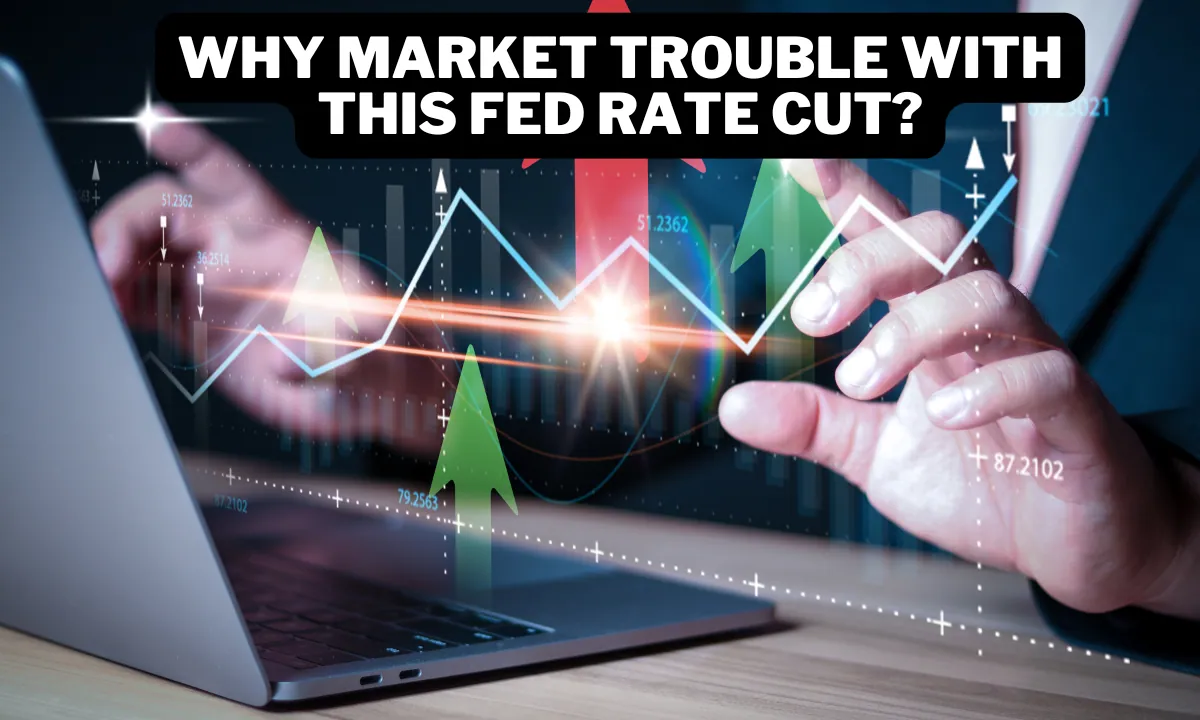The Federal Reserve’s recent rate cut, which many anticipated would cause significant market swings, has instead resulted in a relatively muted reaction. While this calm may seem reassuring, it might only be temporary, with potential aftershocks still looming. The Fed’s bold move—a half-percentage-point rate cut—has left investors divided and uncertain about the future.
The Fed’s Half-Percentage Point Rate Cut: What It Means
The Federal Reserve’s decision to cut interest rates by an unusual 50 basis points came as a surprise to many traders and investors, who were largely expecting a smaller 25 basis point cut. This move signals the Fed’s urgency in addressing inflation and economic uncertainty. But, despite the magnitude of the cut, the market reaction has been subdued.
Stock markets, the U.S. dollar, and bond yields initially saw minor fluctuations, but the significant impact investors were bracing for has yet to fully materialize. As Brian Jacobsen, Chief Economist at Annex Wealth Management, stated, “The calm is not going to last.”
Why Was the Market Reaction Muted?
One reason for the quiet market response lies in how asset prices behaved leading up to the announcement. The Russell 2000 index had risen 5% in the previous five sessions, while the U.S. dollar had slipped 0.7% on expectations of the Fed’s rate cut. This pattern is often referred to as “buy the rumor, sell the news.” Many traders had already adjusted their positions, limiting any dramatic moves post-announcement.
Stock options, for example, had priced in a potential 1.1% swing for the S&P 500, but the index closed the day down only 0.29%, snapping its seven-day winning streak. The dollar initially dipped but recovered to finish slightly higher. This is partly because the Fed’s move was heavily telegraphed, meaning markets had already accounted for it ahead of time.
Bond Yields Surge Amidst Uncertainty
While stock markets were relatively calm, bond yields showed more significant movement. The 10-year Treasury yield spiked by seven basis points after the announcement, while the 2/10-year U.S. Treasury yield curve reached its steepest level since mid-2022. This steepening indicates long-term expectations of higher inflation and economic growth.
However, Treasury yields had been trending lower in the days before the rate cut, reflecting a market that was preparing for an aggressive monetary policy shift. With yields moving inversely to bond prices, investors saw this as an indication of rising uncertainty about the Fed’s ability to control inflation.
Potential Risks Ahead for the Market
Despite the immediate muted response, experts warn that the market could be in for a more turbulent period. Bond yields are expected to continue rising, as predicted by Julian Emanuel, Senior Managing Director at Evercore ISI. He recommended positioning for higher yields, with the belief that progress on inflation may slow or stall.
As for equities, the late-day reversal in stocks could be an early warning signal. Jacobsen emphasized that unless new data provides clear direction, markets could face further volatility. Investors are keenly watching upcoming reports, such as Thursday’s initial jobless claims, to gauge the broader economic landscape.
Karl Schamotta, Chief Market Strategist at Corpay, also pointed to risks in foreign exchange markets. He noted that the Fed’s decision could trigger sudden market movements as traders react to shifting rate expectations in other economies.
Small Caps and Rate Cuts: A Glimpse of Hope?
While large-cap stocks struggled to find direction, small-cap stocks initially showed a stronger response to the rate cut. The Russell 2000, which tracks small-cap companies, saw a near 1% jump immediately after the announcement, marking its biggest one-minute gain in months. This surge reflected traders’ optimism about lower borrowing costs for smaller firms.
However, the rally quickly faded, with the Russell 2000 ending the day up just 0.04%. Small-cap stocks are typically more sensitive to interest rate changes, as lower rates reduce their financing costs, potentially boosting profitability. But even with this potential tailwind, the overall market sentiment remained cautious.
What Does the Fed’s Rate Cut Signal?
Fed Chair Jerome Powell described the rate cut as a “strong start” toward ensuring the U.S. economy remains resilient. But not everyone is convinced. Matthew Rowe, Head of Portfolio Management at Nomura Capital Management, warned that the market’s lackluster response could indicate deeper concerns about the economy.
Rowe speculated that investors may be worried about what the Fed knows that the broader market does not. “There will be a lot of profit-taking by investors who entered the day long on equities,” he said, suggesting that further declines in stock prices could follow as traders reassess their positions.
Could More Rate Cuts Be on the Horizon?
Looking ahead, many market analysts are now speculating that this rate cut may not be the last. The Fed’s decision to implement a larger-than-expected cut hints at the possibility of additional rate reductions shortly. Ryan Detrick, Chief Market Strategist at Carson Group, suggested that the Fed’s willingness to continue cutting rates could provide a tailwind for small-cap stocks, which stand to benefit from cheaper financing.
However, with inflation still a concern and global economic uncertainty lingering, it’s unclear how much more room the Fed has to cut rates without sparking further instability in the financial markets.
Conclusion: A Temporary Calm Before Potential Volatility
While the initial reaction to the Fed’s rate cut has been relatively subdued, this calm may be short-lived. With bond yields rising and equity markets uncertain, investors are bracing for more volatility in the days and weeks ahead. The Federal Reserve’s aggressive action to cut rates by 50 basis points shows the urgency of addressing inflation and economic concerns, but it also raises questions about the stability of the markets moving forward.
As new data emerges, particularly around employment and inflation, market participants will be closely monitoring how the Fed’s actions ripple through the broader economy. Investors should be prepared for further fluctuations as the full impact of the rate cut unfolds.
